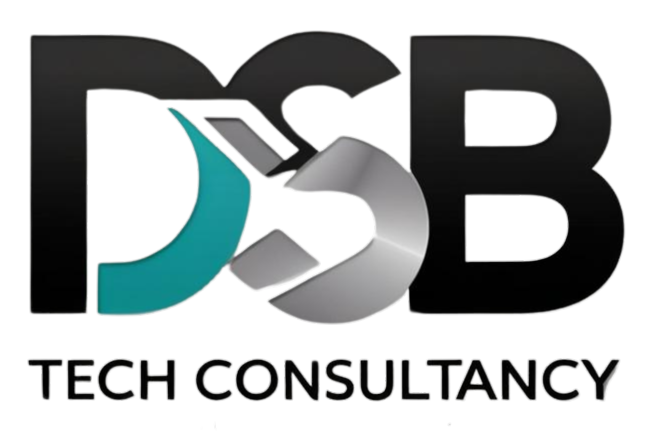Leading From Alongside: Building a Tech Team That Shines
(with OKRs, Evolved Leadership, and a Lifestyle Focus)
In the dynamic industry of technology, leadership isn’t about issuing directives from a distant command centre. It’s about cultivating a collaborative team, a team that works with you, not for you, all aligned towards shared business aims, particularly in a saturated tech market. Tech necessitates a move away from traditional hierarchies and towards empowered, engaged teams. (out with the old and in with the new)
The “With” vs. “For” Mindset: An Evolution
For those of us with backgrounds in command-driven environments, like myself 9 years the military, this transition requires a conscious adaptation. I’ve learned the value of decisive action and clear directives. However, in the realm of tech innovation, the most potent force is often collective intelligence. It’s about acknowledging that the best ideas can originate from anywhere within the team. (one for a later date, don’t be threatened by hiring people more experienced in certain skill sets)
This evolution isn’t about discarding valuable lessons; it’s about refining them. My own LinkedIn history and recommendations reflect this journey, showcasing a commitment to building teams through investment in people, a practice I deeply believe in. We retain the discipline and focus, but apply them in a way that empowers and inspires.
OKRs: A Two-Way Street to Alignment
One powerful tool for fostering this collaborative “with” mindset is Objectives and Key Results (OKRs). OKRs are more than just goal-setting frameworks; they’re a mechanism for two-way communication and alignment.
Here’s why they’re so beneficial:
· Clarity and Transparency: OKRs clearly define what the team is trying to achieve (Objectives) and how progress will be measured (Key Results). This transparency ensures everyone is on the same page.
· Alignment and Focus: OKRs align individual and team goals with the overall business objectives, ensuring everyone is pulling in the same direction.
· Empowerment and Ownership: When team members are involved in setting their own Key Results, they feel a greater sense of ownership and accountability.
· Two-Way Communication: Crucially, OKRs facilitate a two-way dialogue. They aren’t just top-down directives. They are collaborative, where team members can suggest and influence key results that they feel are achievable, and that will make a genuine impact.
· Measurable Progress: Key Results provide quantifiable metrics, allowing for objective tracking of progress and identification of areas for improvement.
· Agility and Adaptability: OKRs allow for regular check-ins and adjustments, enabling teams to adapt to changing priorities and market conditions.
Instead of dictating every step, we can use OKRs to set the strategic direction and empower our teams to determine the best path to achieve those goals. This approach leverages the collective expertise of the team and fosters a sense of shared ownership.
Investing in the Future: Cultivating Talent in a Saturated Market (with OKR Alignment and Lifestyle Integration)
In a crowded tech landscape, attracting and retaining top talent requires more than just competitive salaries. It requires a culture that fosters growth, innovation, and purpose. Crucially, it also requires acknowledging that for many, tech is a lifestyle, not just a 9-to-5 job.
· OKRs and Career Development: By aligning individual OKRs with career development goals, we can create a clear path for growth and advancement.
· Mentorship and Coaching (Aligned with OKRs): Mentorship programmes can be structured around OKR achievement, providing targeted support and guidance.
· Continuous Learning (Driven by OKRs): Encourage team members to set learning OKRs, focusing on acquiring skills that will contribute to both their personal growth and the team’s success.
· Tech as a Lifestyle: Embracing the Passion:
o For many in tech, it’s more than just a job; it’s a passion. They’re driven by the desire to solve problems, create innovative solutions, and make a positive impact on the world.
o This passion often extends beyond the traditional workday. Recognising this, we must embrace flexibility and autonomy, allowing individuals to work in ways that suit their needs and preferences.
o Continuous learning, often pursued outside of standard hours, is a core component of this lifestyle.
· Beyond Skills, Building People:
o Investing in people goes beyond technical training. It’s about fostering their growth as individuals, nurturing their creativity, and supporting their passion.
o It’s about building a strong community where knowledge is shared and support is readily available.
From Command to Collaboration: A Personal Journey (and a Call to Action)
The transition from a command-driven environment to a collaborative leadership style is a journey. It requires humility, empathy, and a willingness to learn. It’s about acknowledging that leadership isn’t about having all the answers; it’s about creating an environment where everyone can contribute their best work. My personal experience, validated by my professional network (my recommendations make me incredibly proud and demonstrates the power of this shift)
By embracing OKRs, fostering a “with” mindset, recognising tech as a lifestyle, and investing in the future of our teams, we can build a tech organisation that thrives in even the most competitive markets. Let’s build the future of tech, together, by investing in our most valuable asset: people.
Jedi’s take the Padawan on a journey. In the words of Mando “this is the way”

